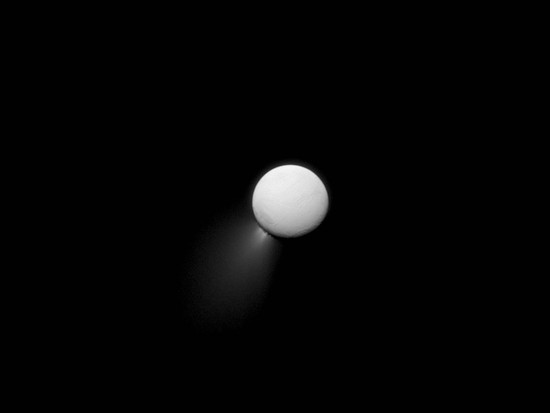Sep 8, 2015
Enceladus shares characteristics with comets.
Proponents of mainstream viewpoints are slowly beginning to realize that asteroids and comets exist in a continuum: neither are strictly identical nor completely different from the other. For example, when the Stardust mission returned to Earth with samples from the coma of comet Wild 2, scientists found that the material looked more like meteoric dust than what was expected from a dirty snowball.
Whatever water or hydroxyl compounds found in cometary comas are probably created there: ionized oxygen from the comet reacts with hydrogen ions streaming out from the Sun. No “jets” of water vapor spew from comets, and no icy plains have ever been observed. Discharges and arcs form the comet phenomena. As previously suggested, exposing an asteroid to an intense electric field over time will most likely create a comet.
One of the most intriguing discoveries by the Cassini spacecraft, currently orbiting Saturn, are the remarkable “plumes” seen erupting from Saturn’s moon Enceladus. Cassini flew close by the superheated geysers erupting from the south polar region of the icy moon, near the so-called “tiger stripes”. These are said to be the sources of hot vapor erupting into space and contributing to Saturn’s rings. There are anomalous aspects to the plumes jetting out of the tiger stripes, however. Electric Universe advocates think that a systematic comparison of textbook geology with electric discharge theories should be considered.
Scientists jumped to conclusions when hot water beneath the surface of Enceladus must be responsible for the hot temperature anomaly causing jets. So-called “tidal kneading” from Saturn does not explain why the plumes are limited to the southern hemisphere.
It appears that the same problems with how jets occur on Enceladus are similar to the difficulties that space scientists have with cometary jets. They are also using the same shaky theory of narrow surface vents above a subsurface chamber of hot water. There is no evidence for such vents, either on comets or on Enceladus.
One of the most surprising results of the Galileo mission to Jupiter was the detection of electrical activity between Jupiter and its moons. Io acts like an electrical generator as it travels through Jupiter’s plasmasphere, inducing over 400,000 volts across its diameter at more than three million amperes. So-called “volcanic” plumes were seen erupting from the moon Io. The plumes are the result of cathode arcs, electrically etching the surface and blasting sulfur dioxide “snow” up to 150 kilometers into space.
The same kind of activity connects Enceladus with Saturn. On August 11, 2008 Cassini’s plasma sensors found ion and electron beams propagating from Saturn’s northern hemisphere, creating an ultraviolet “footprint” in the auroral oval. Of greatest interest was that a correspondence between time-variable emissions from Enceladus’ vents and the auroral footprint’s brightness variations was found. Again, electric effects are seen.
Enceladus and comets reveal that they are electrical cousins in their reactions to strong electric fields from charged bodies in the Solar System.
Stephen Smith













